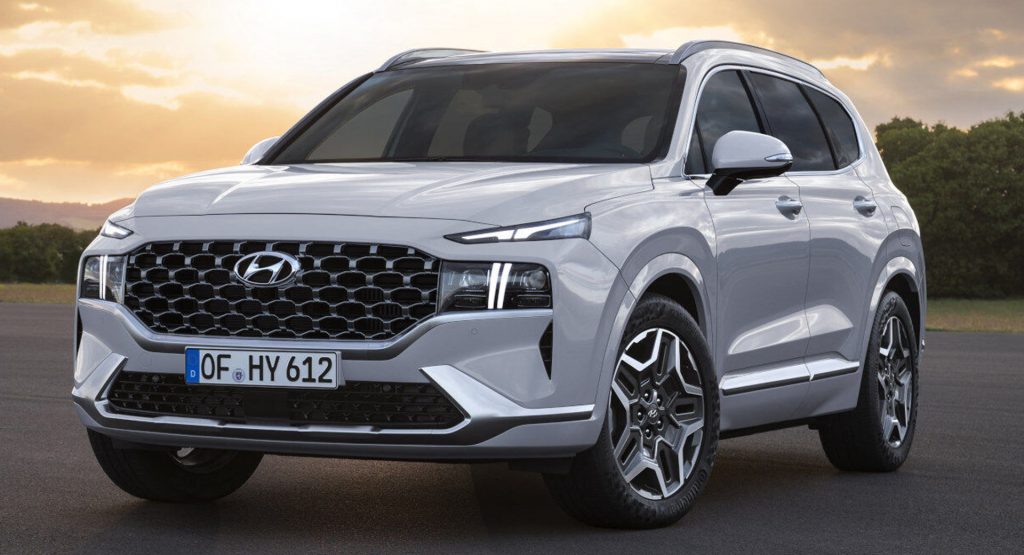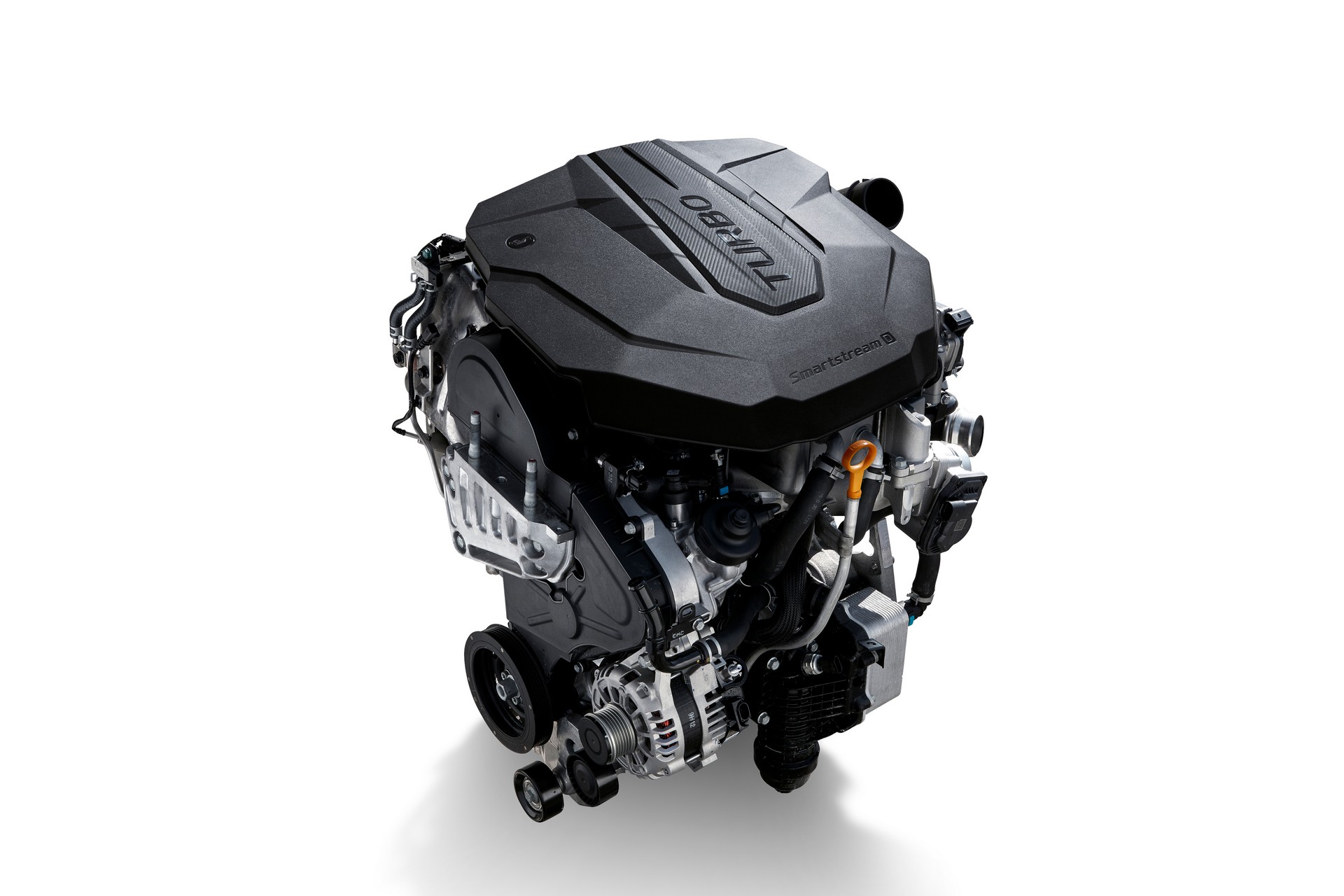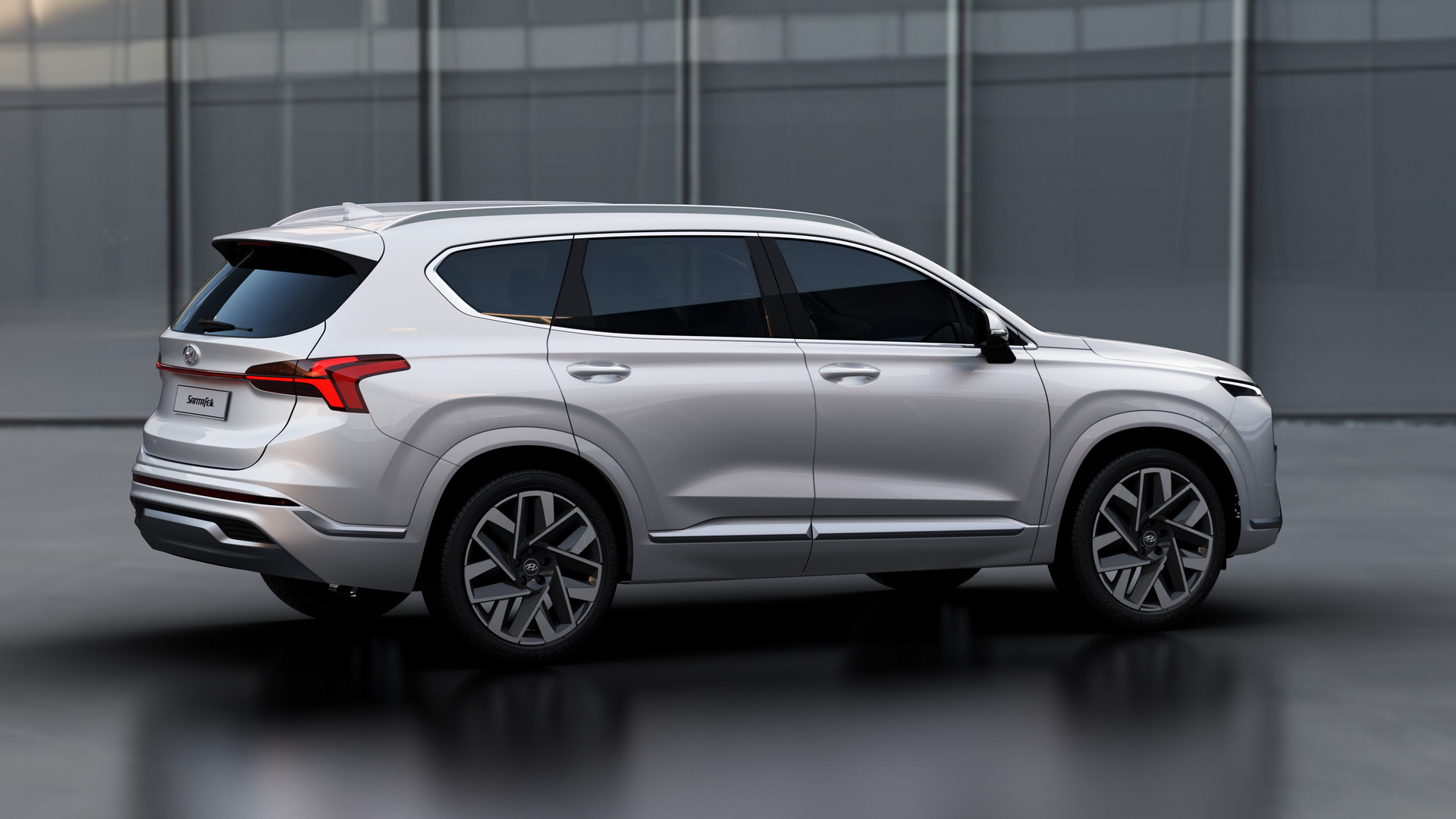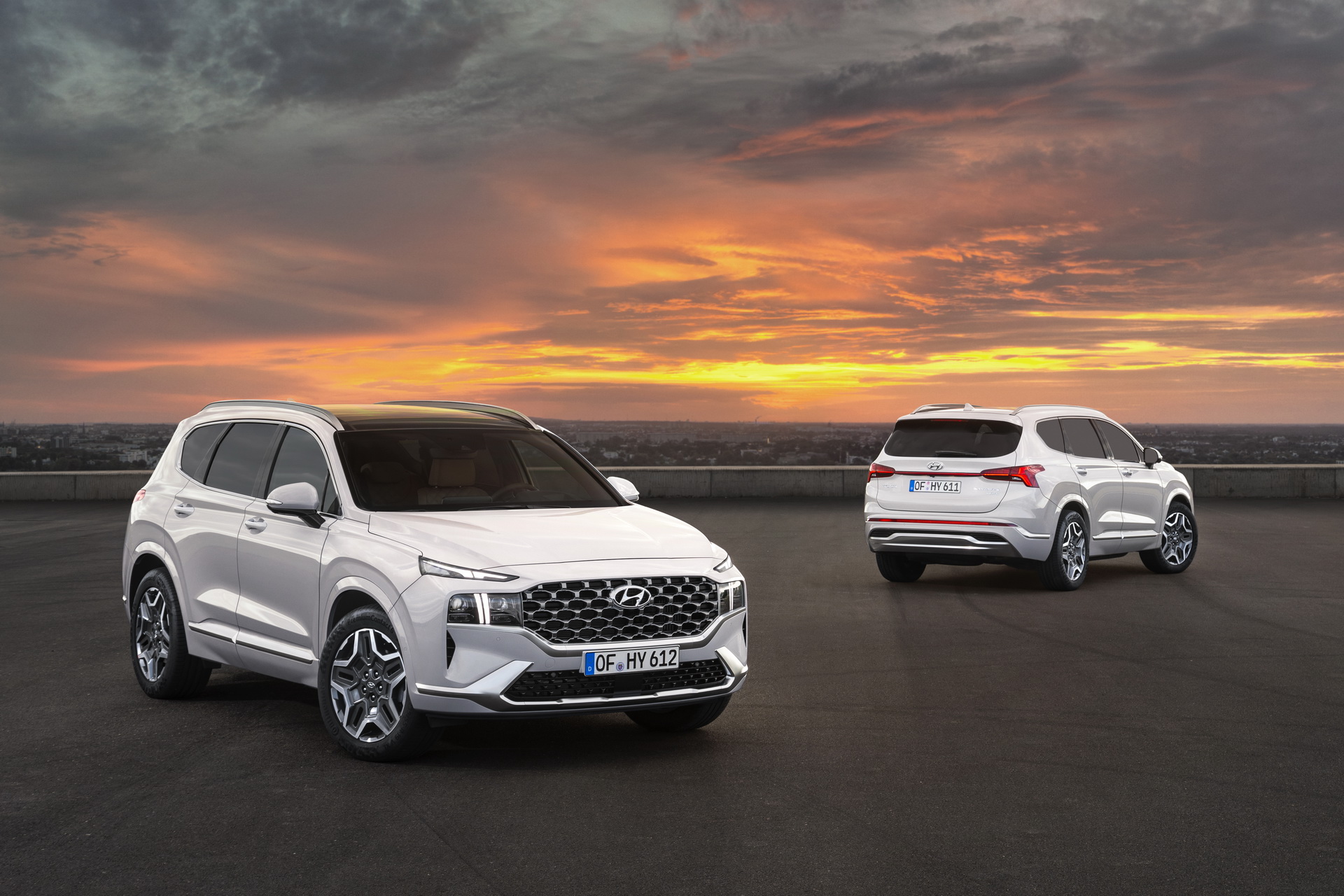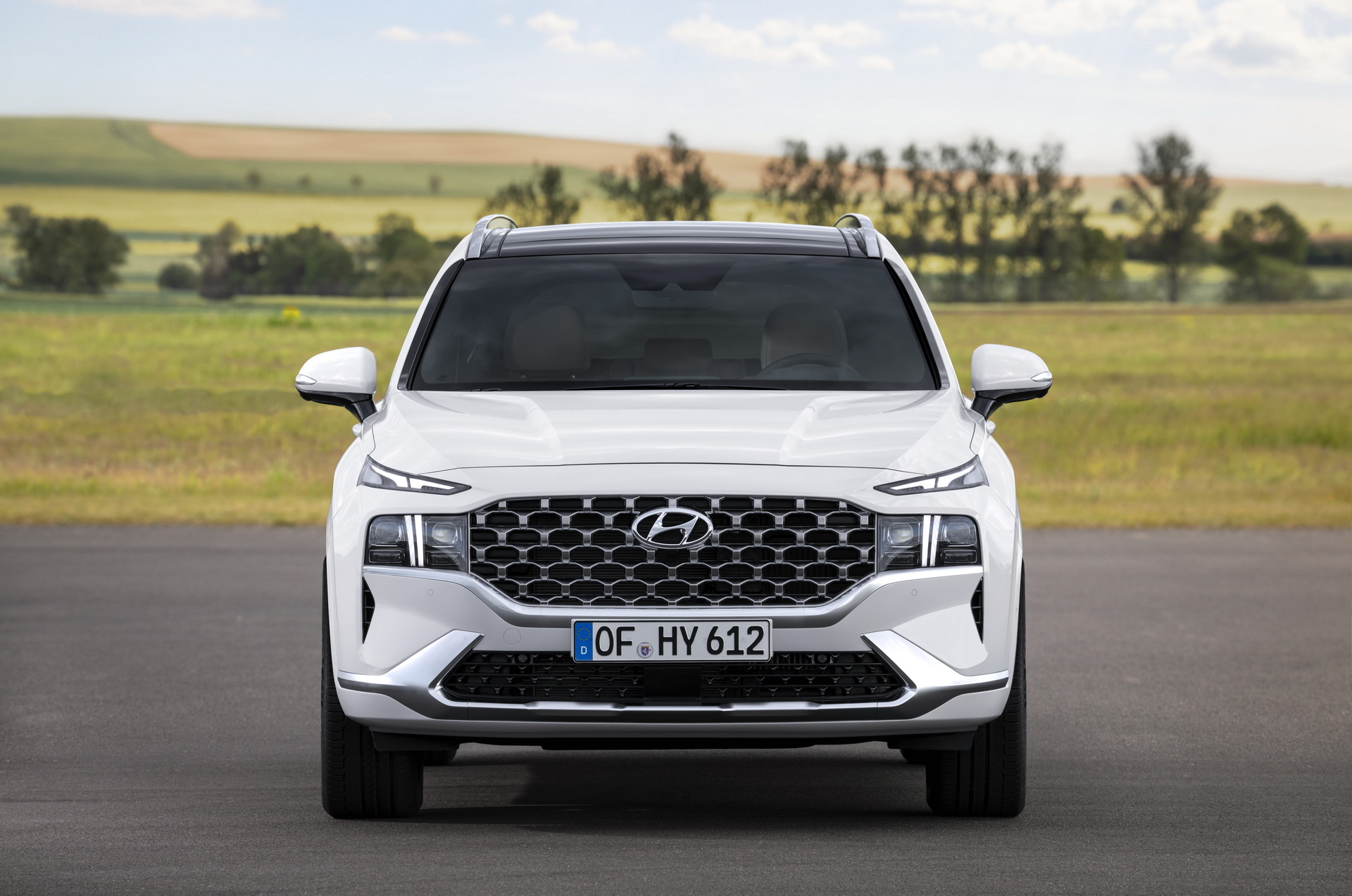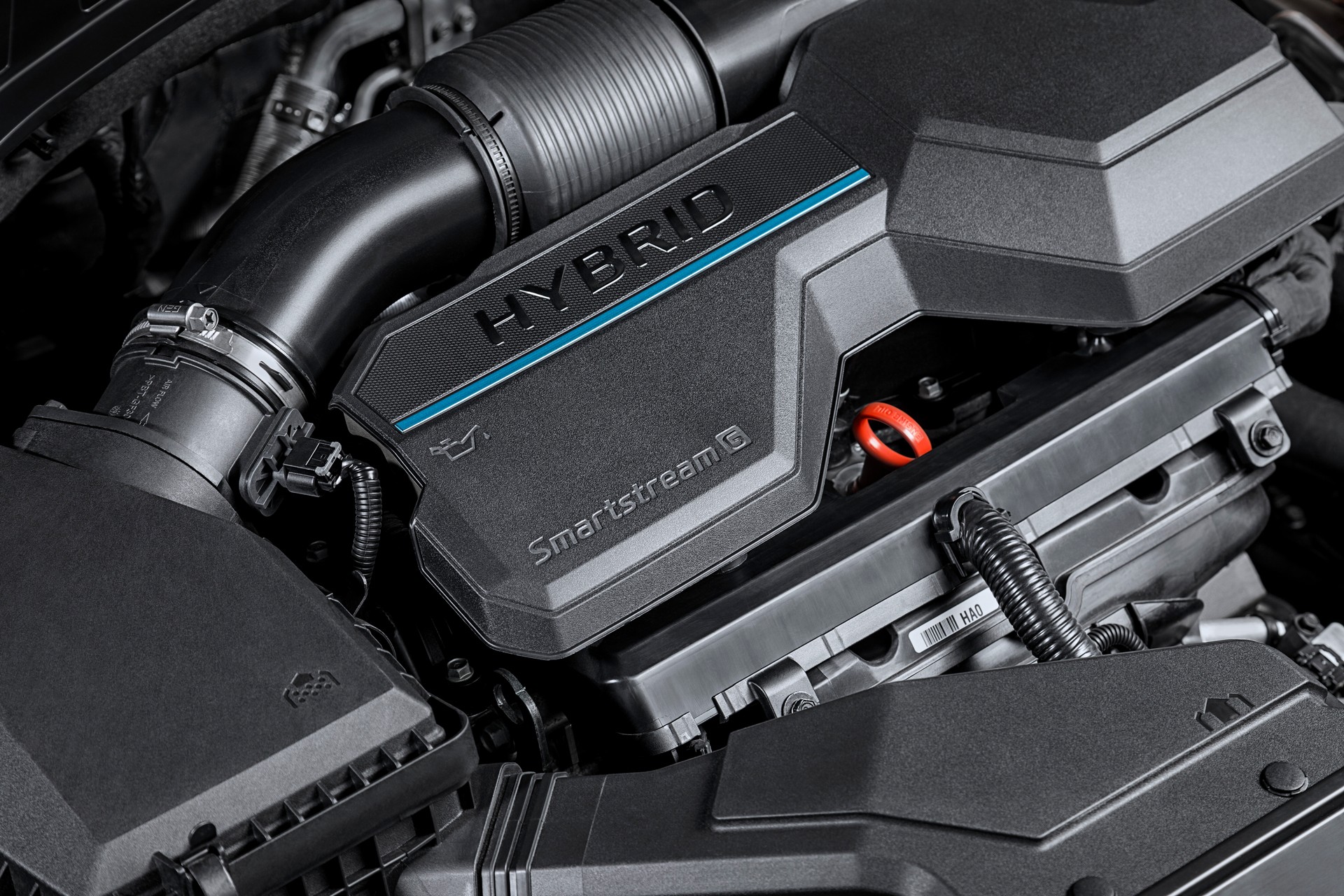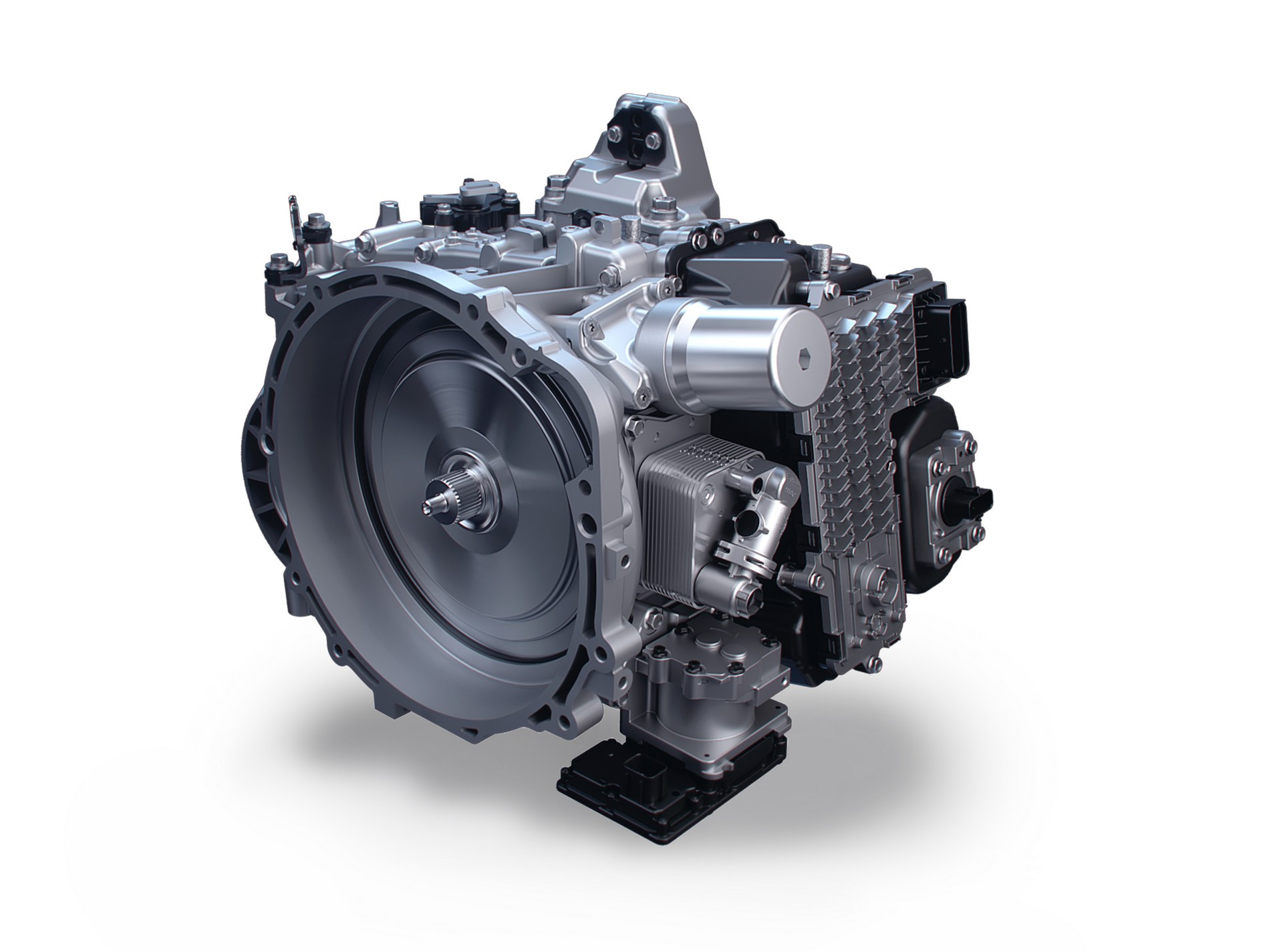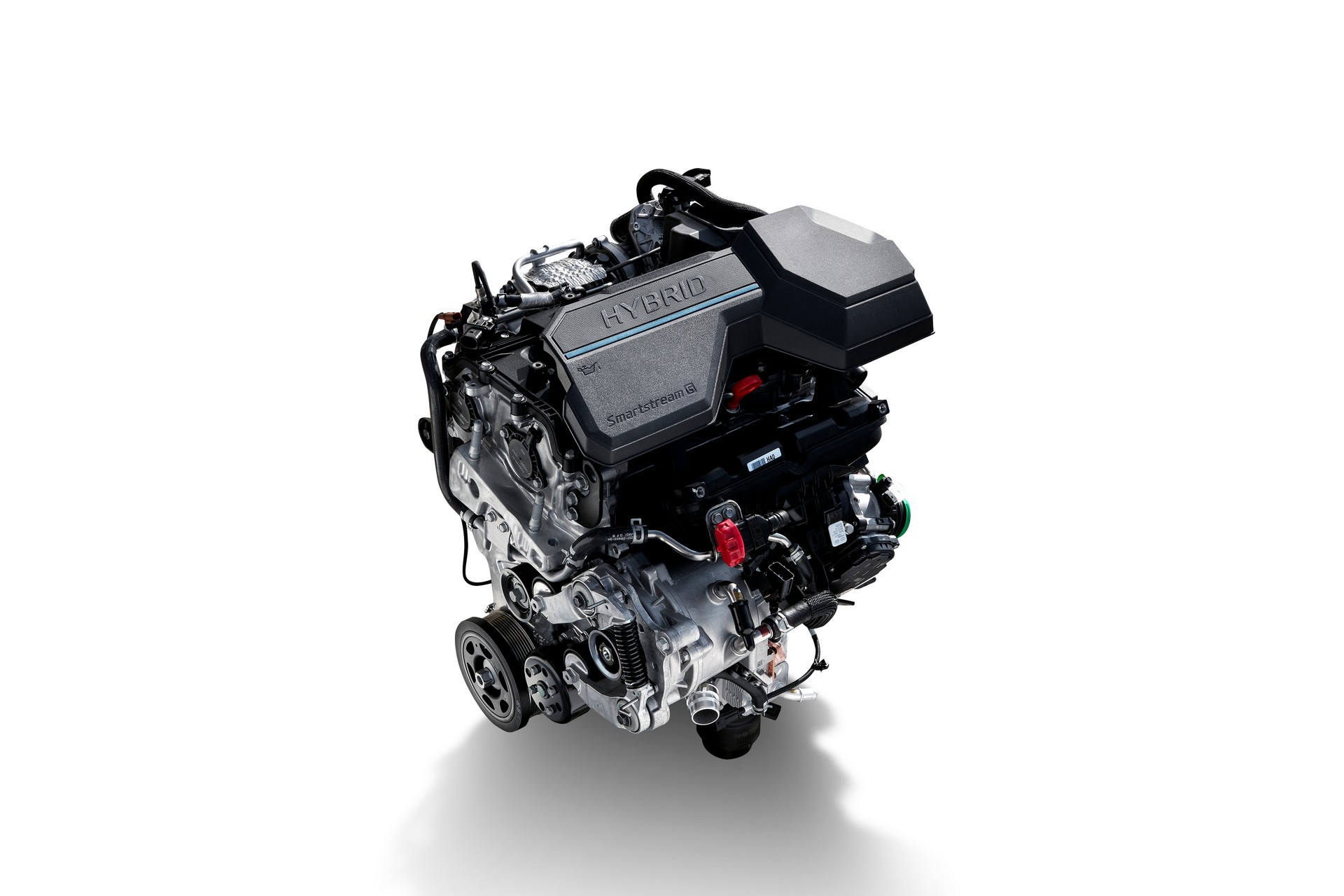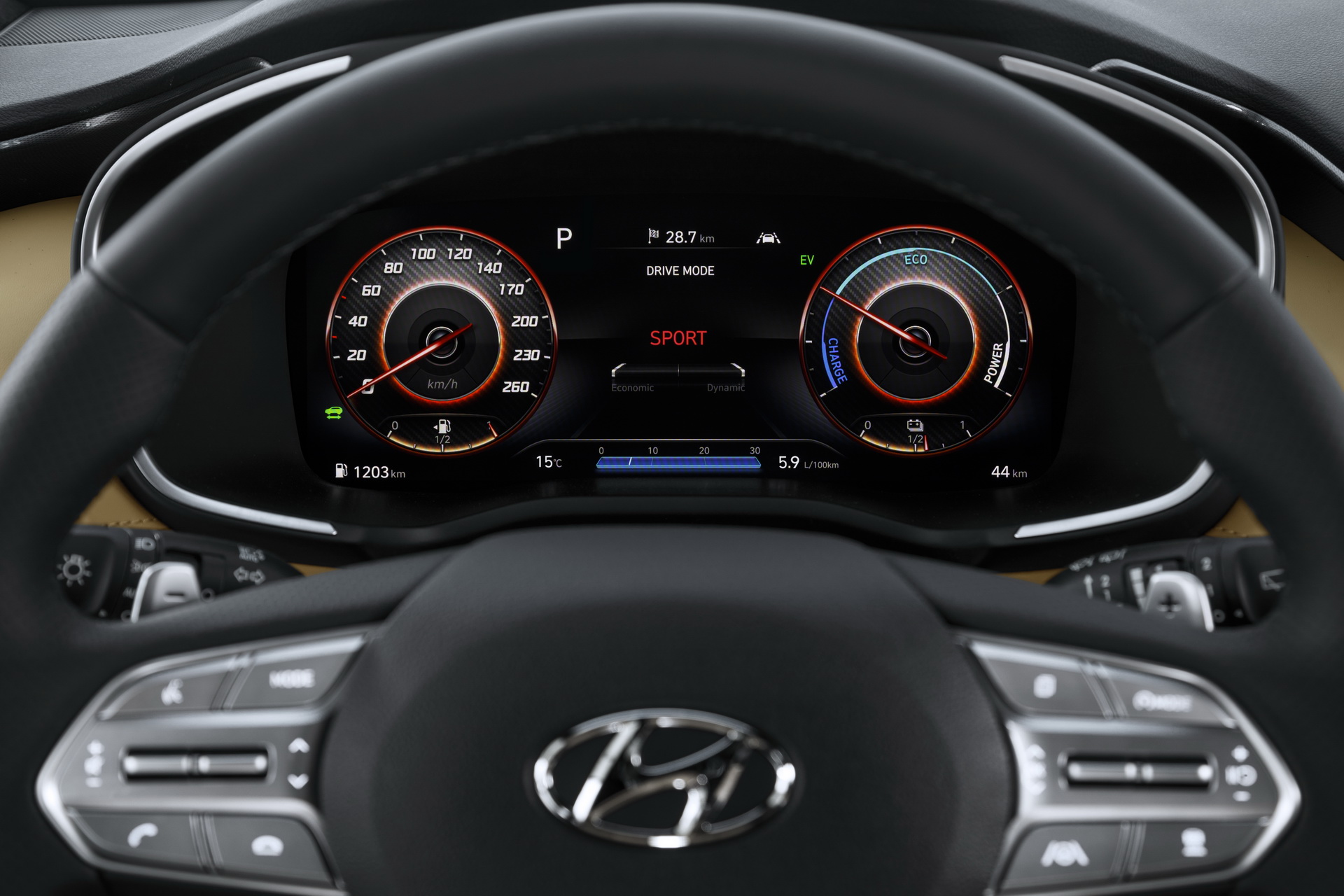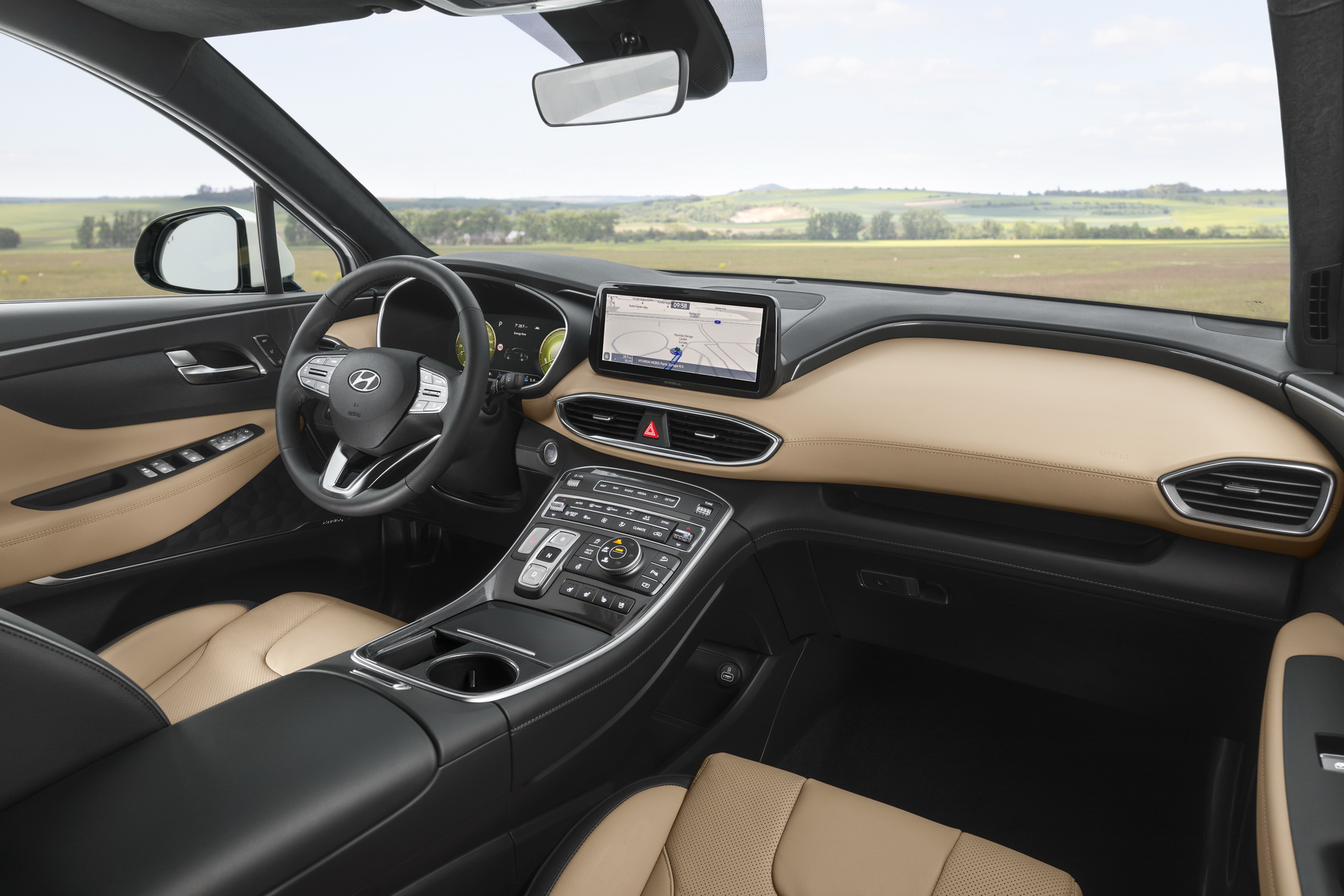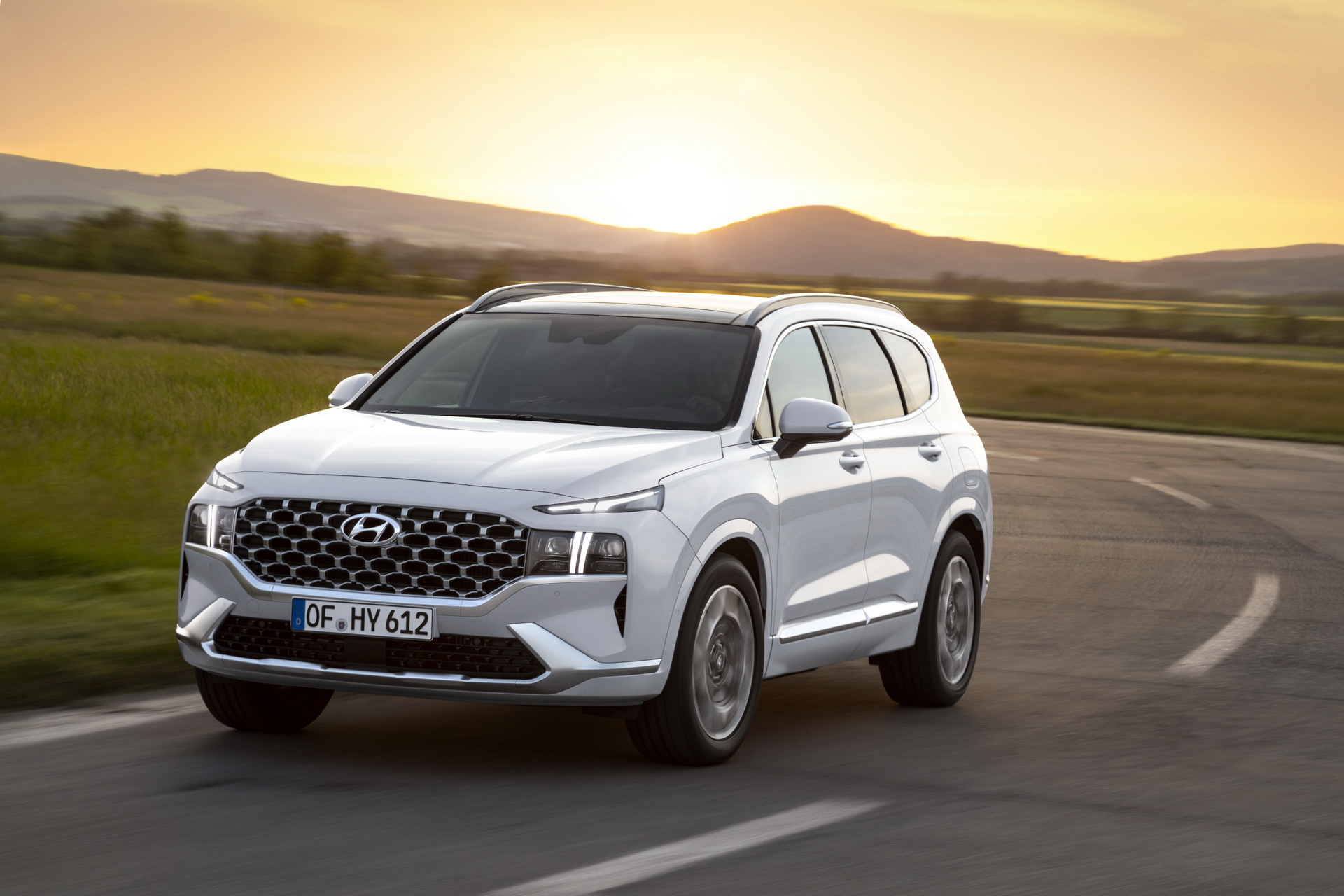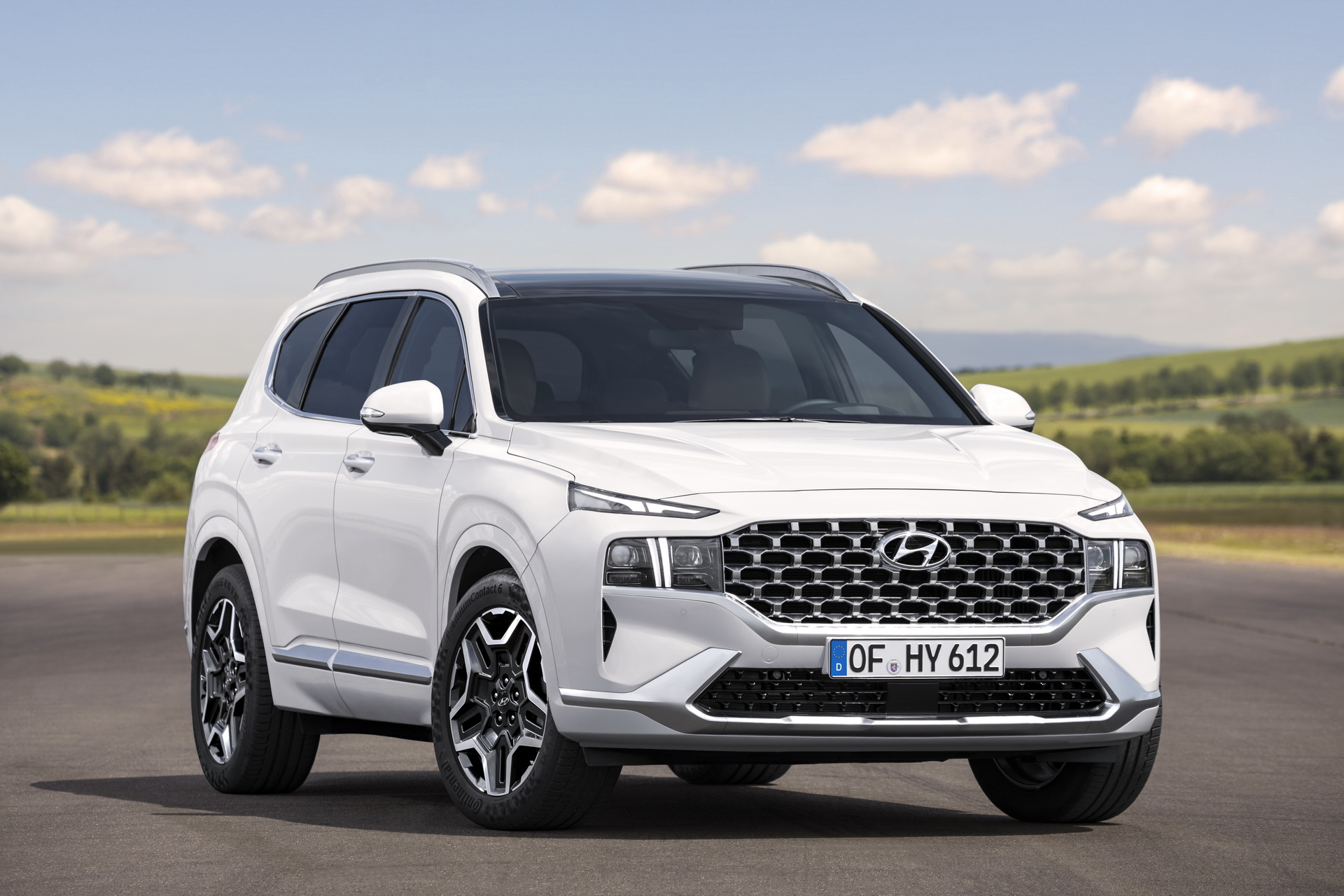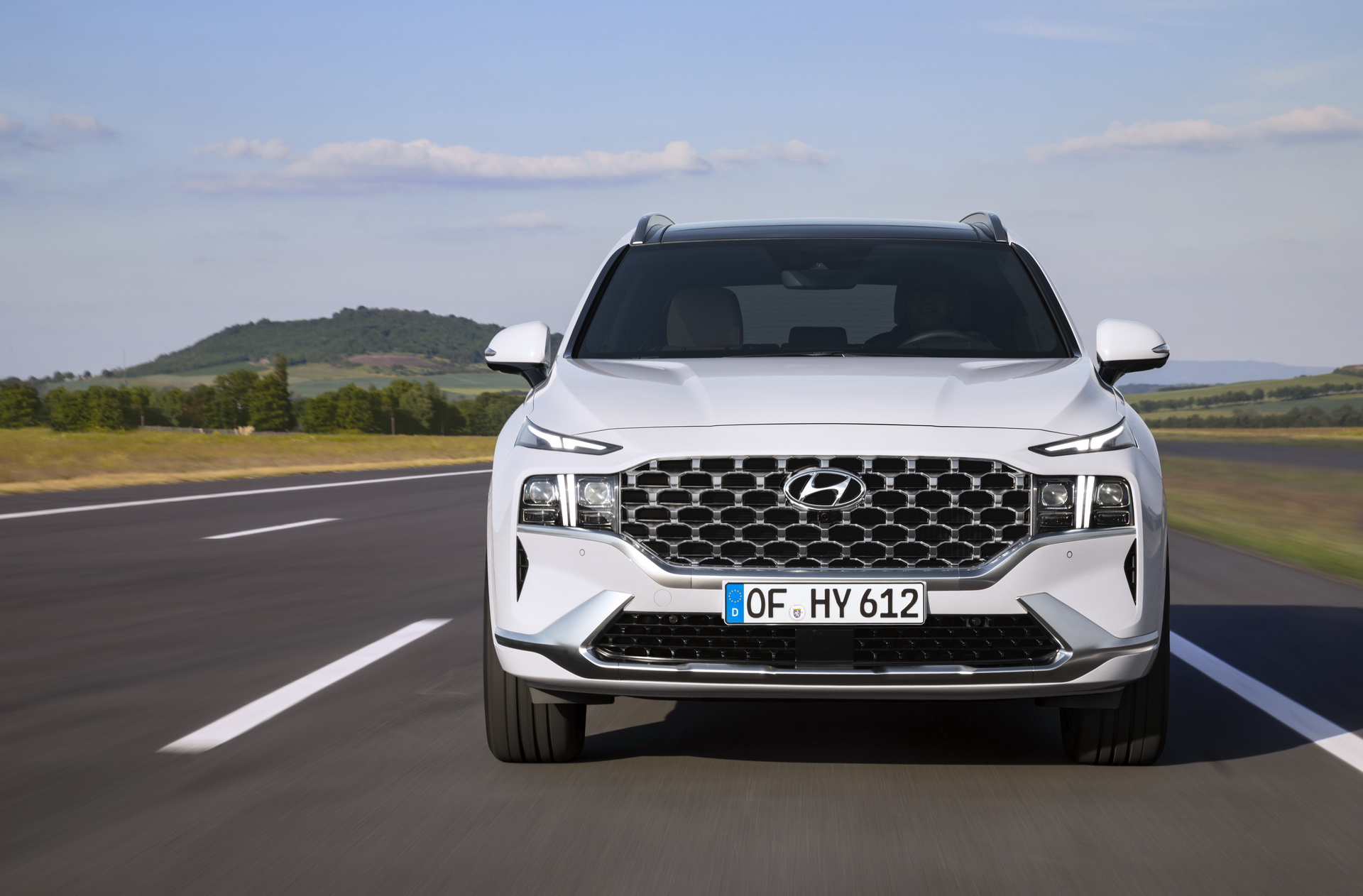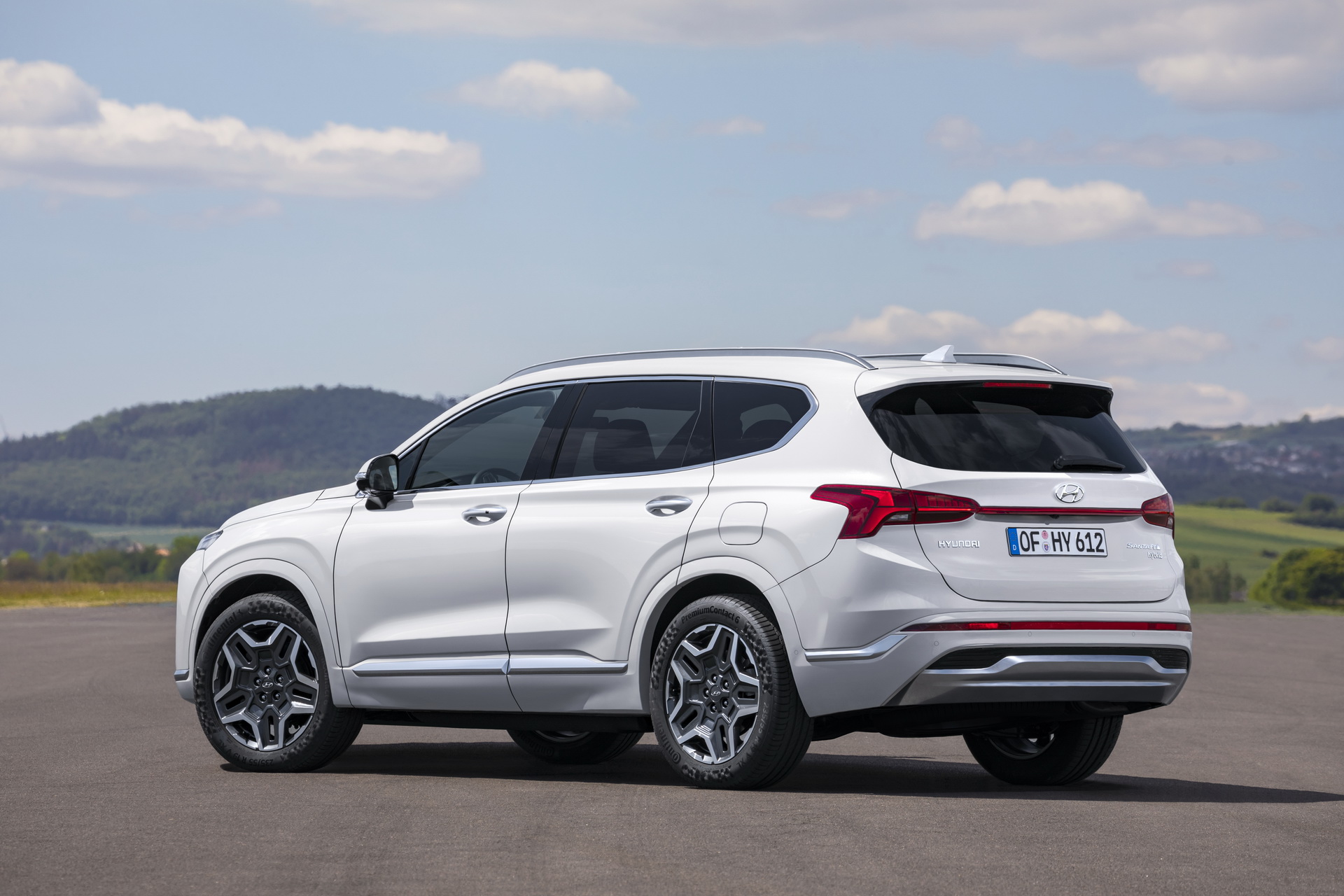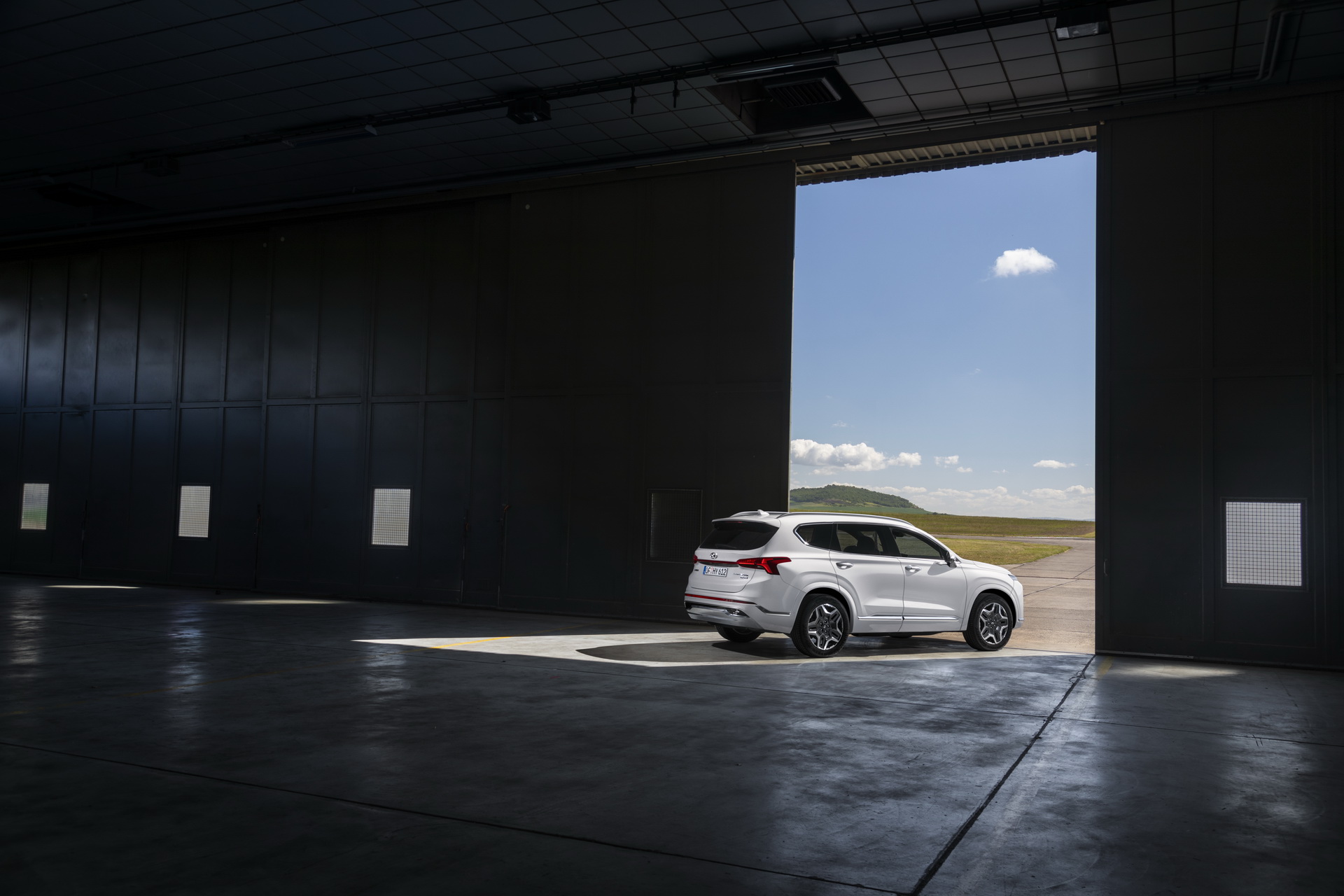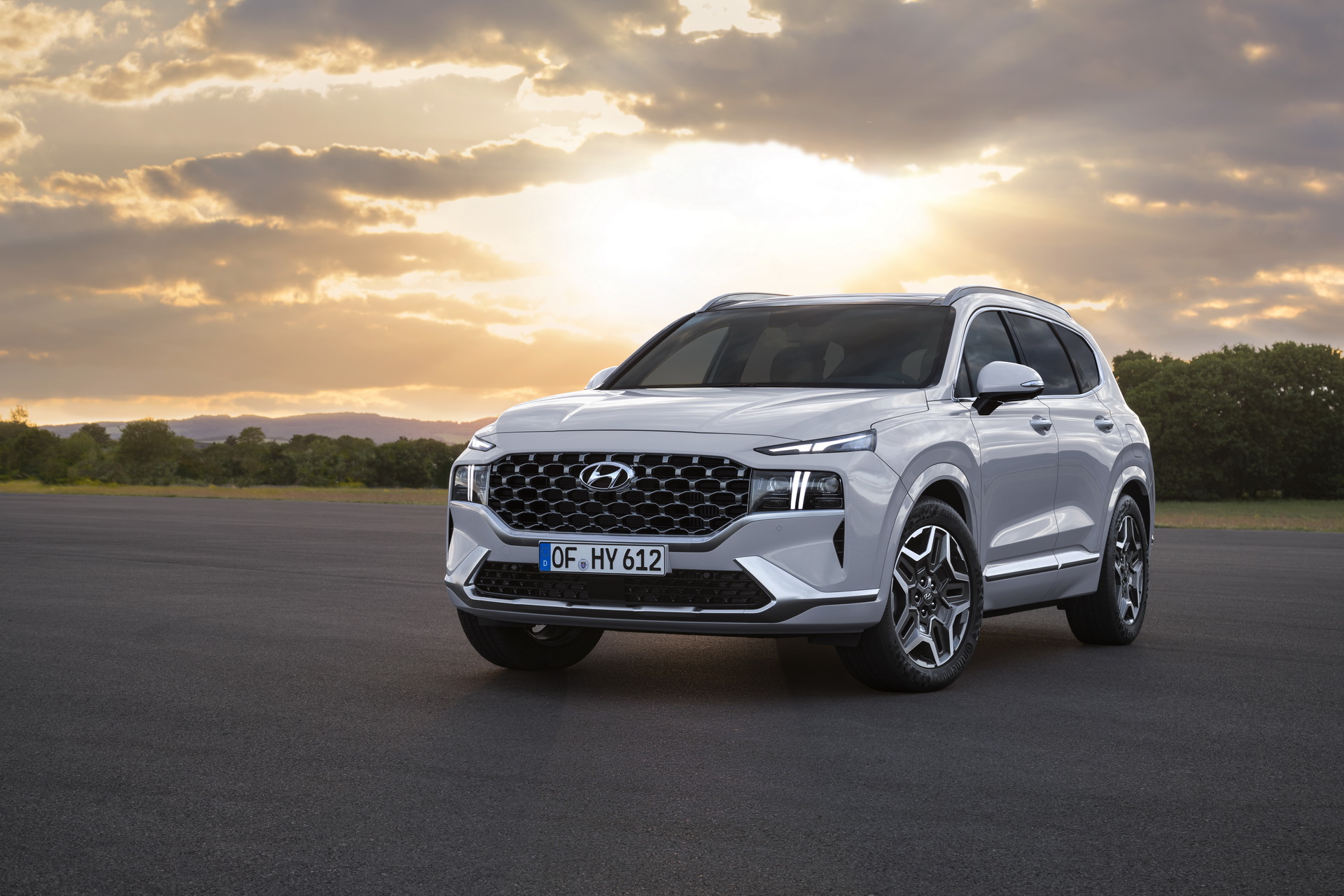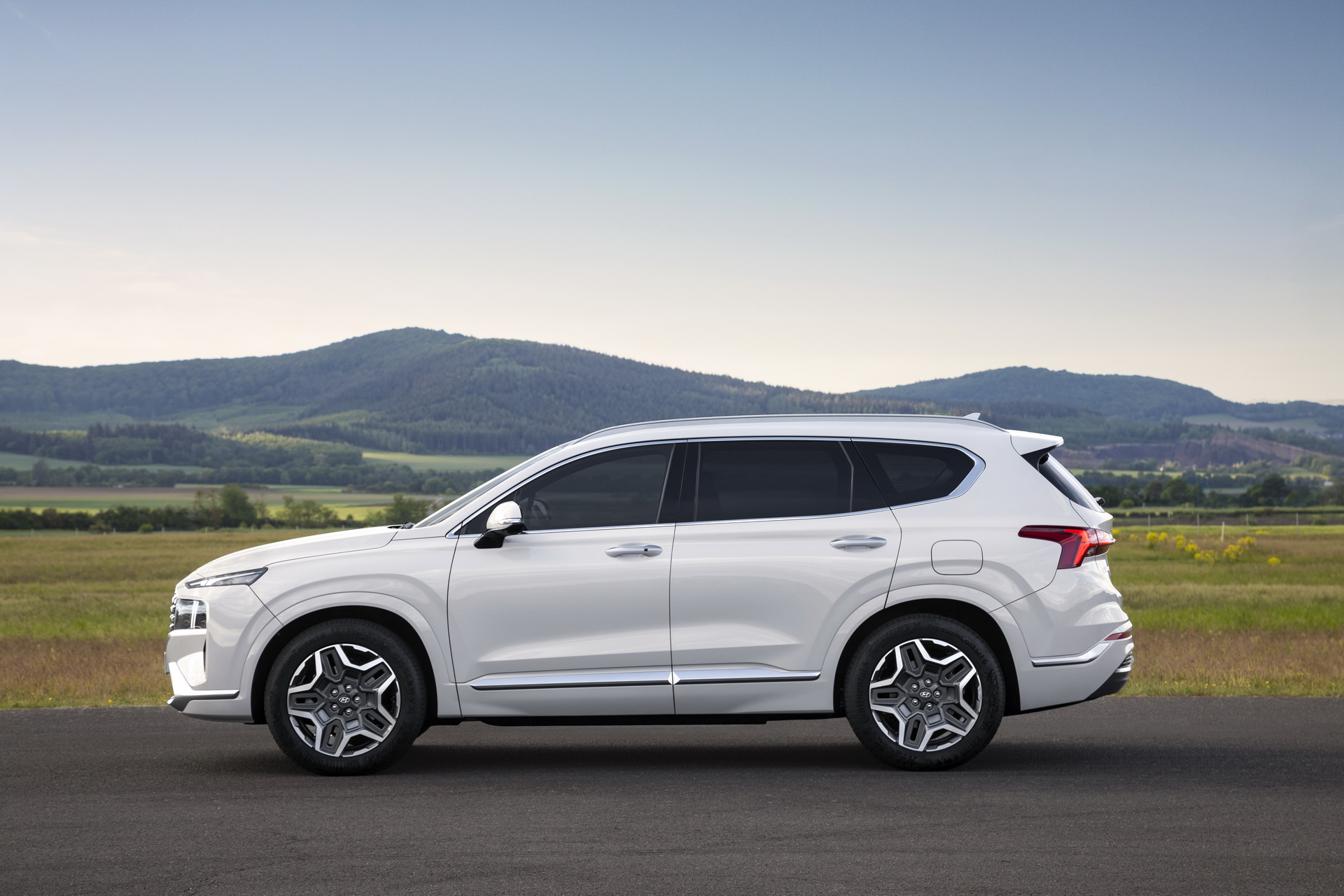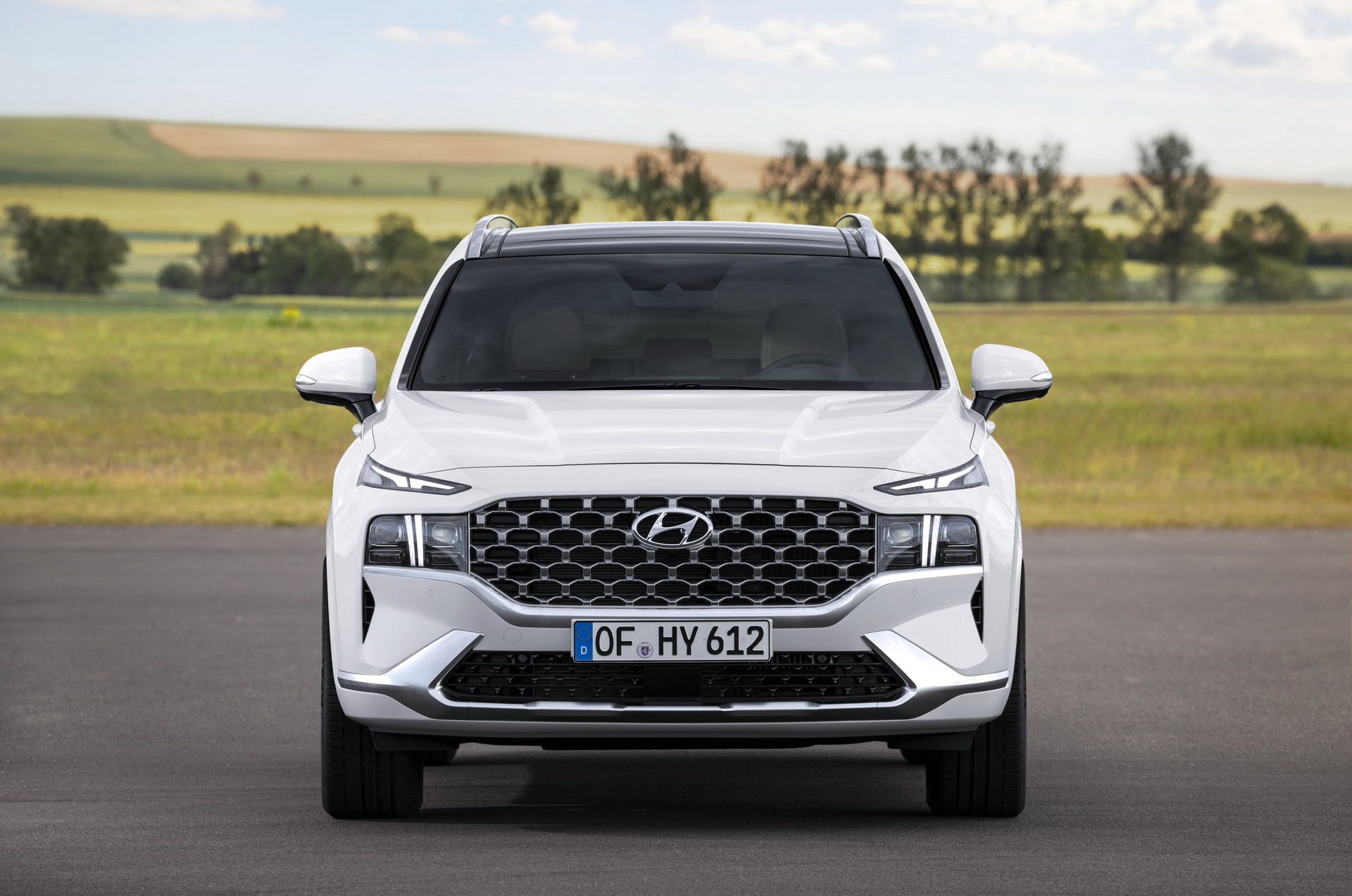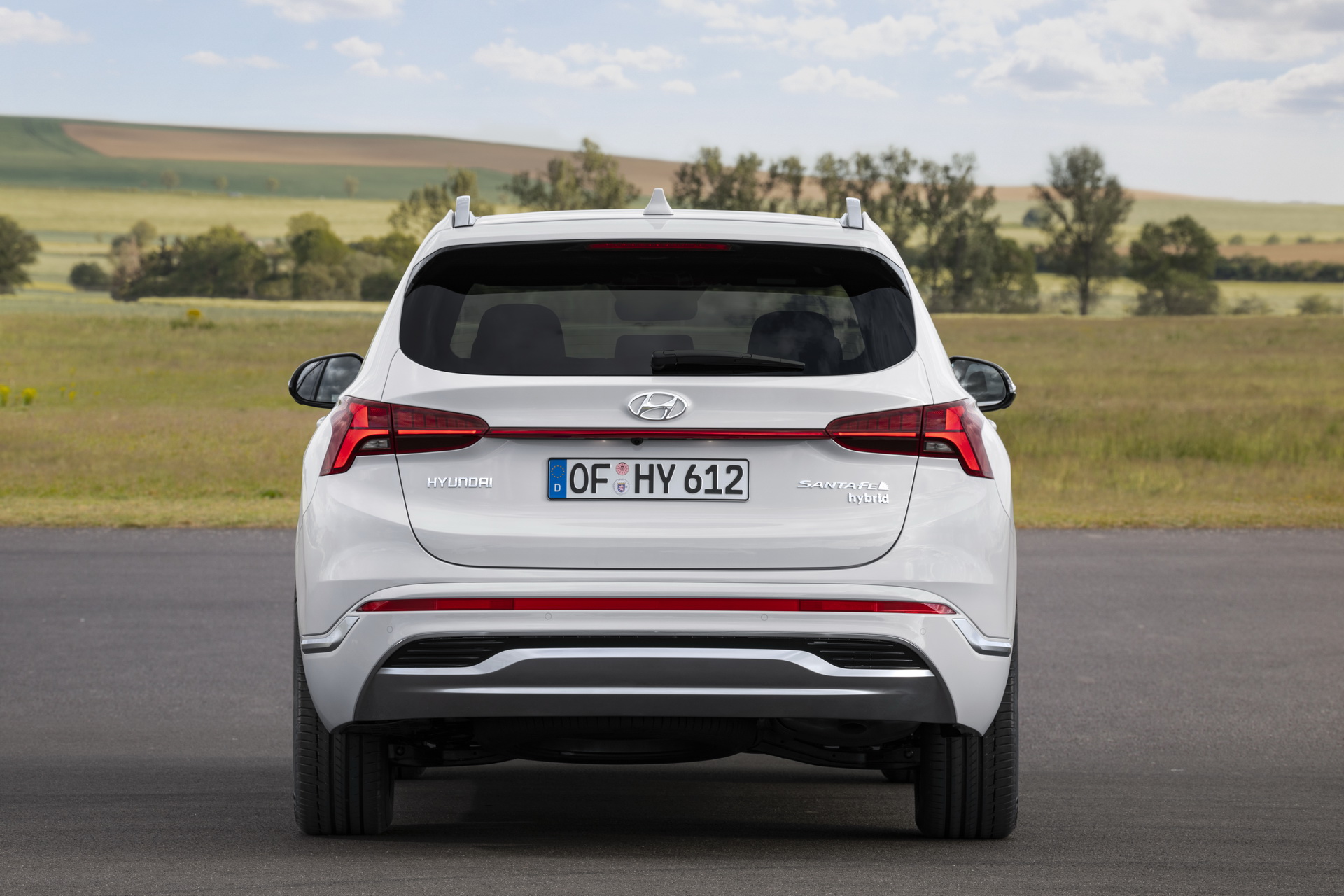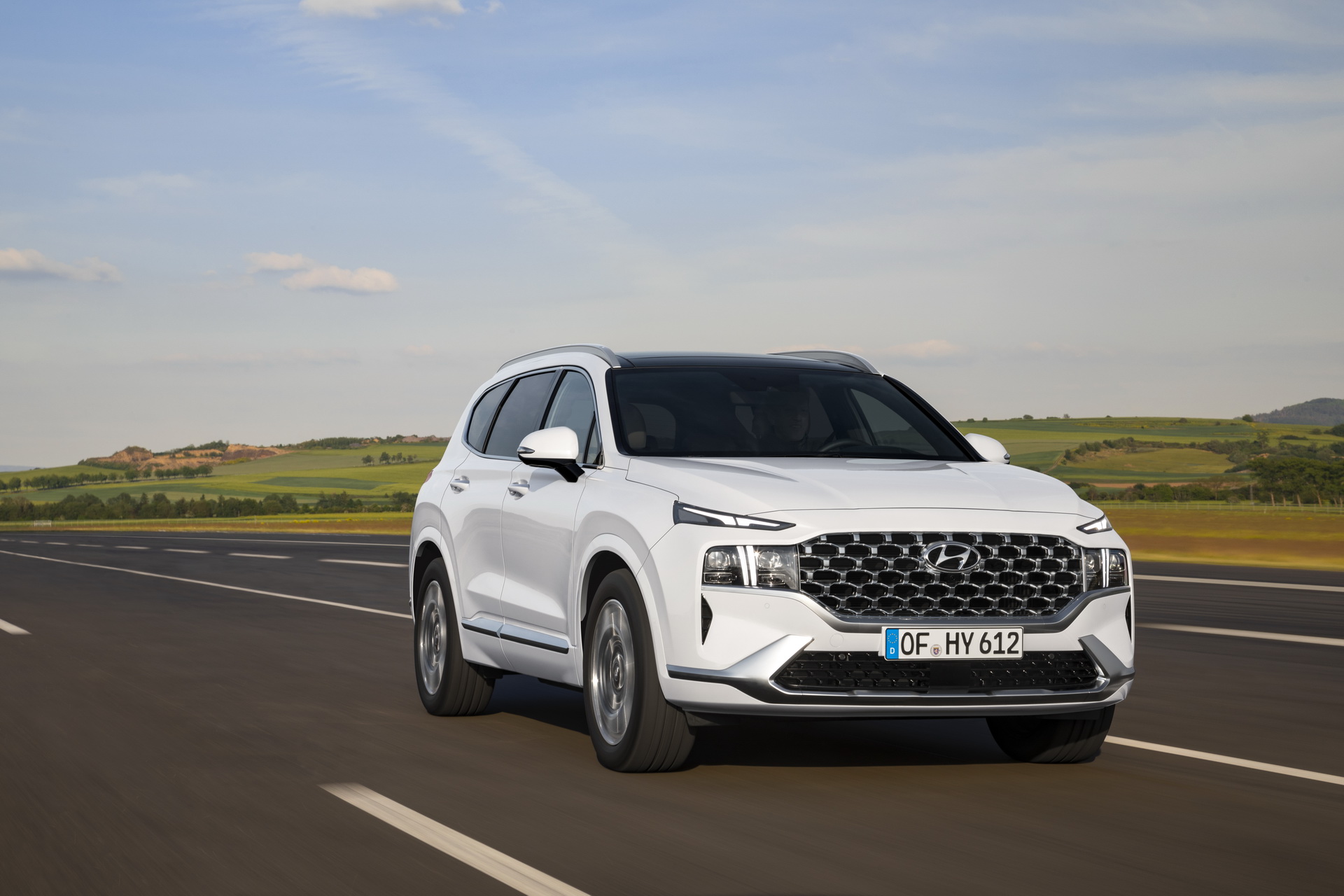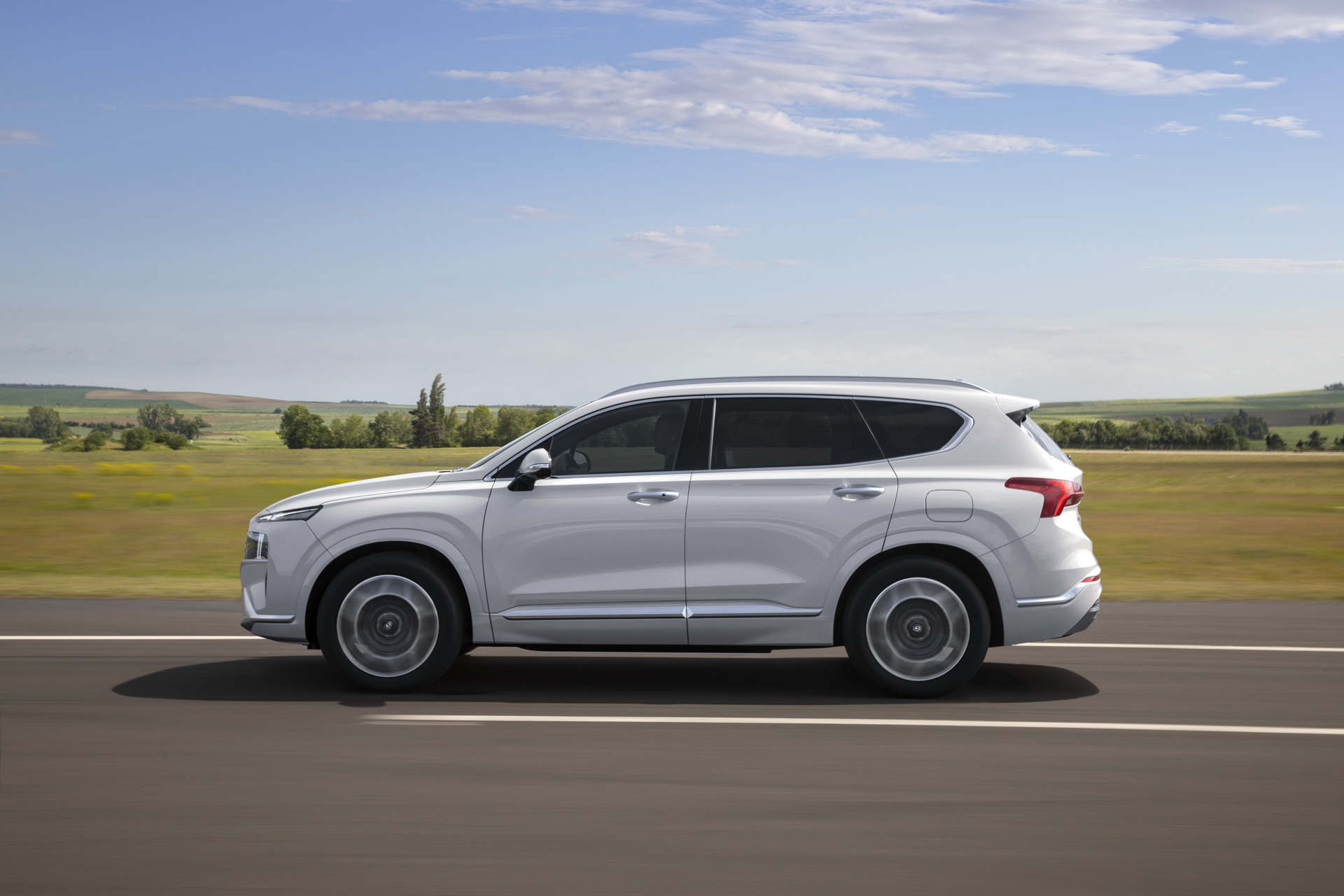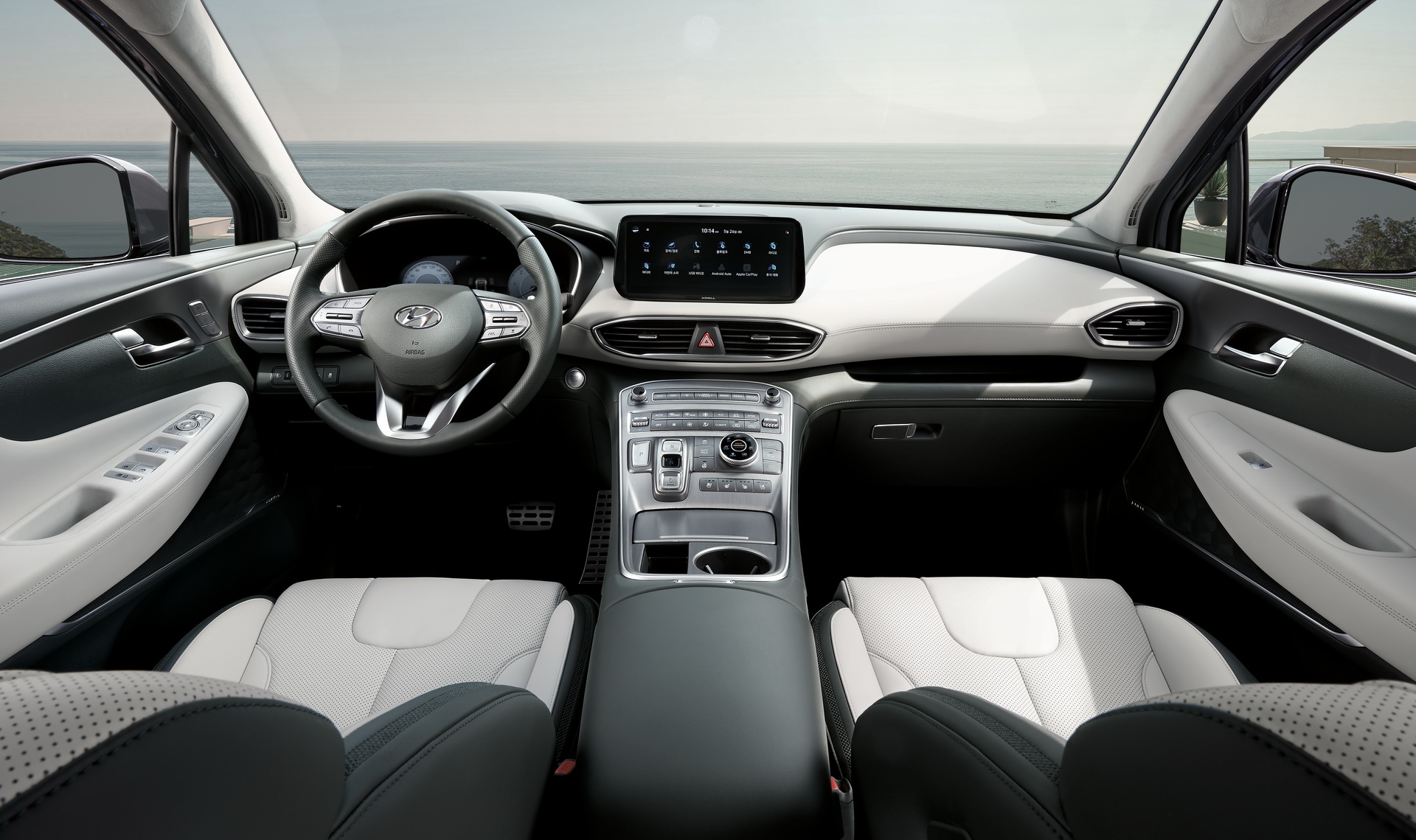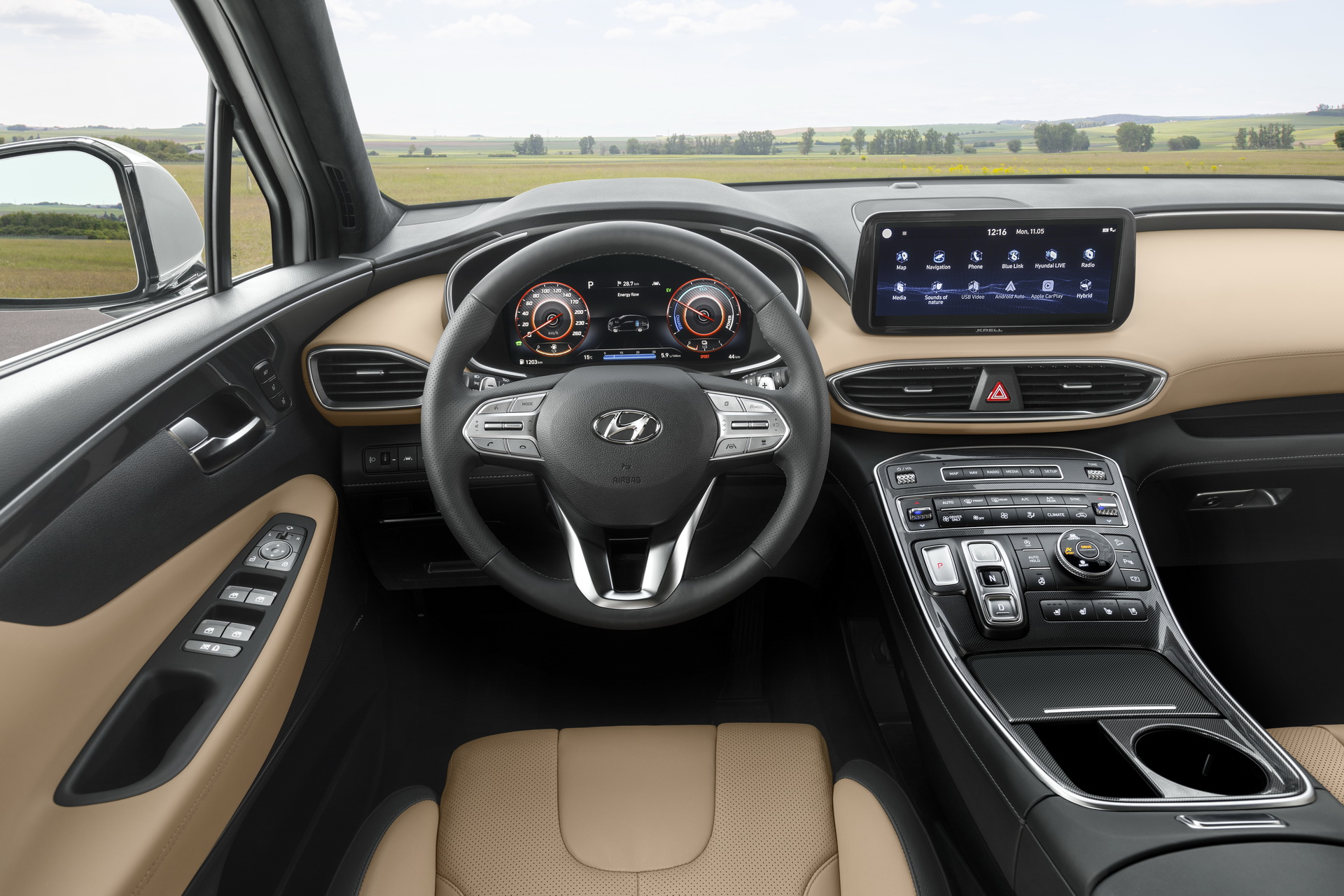Hyundai introduced the new Santa Fe earlier this month, and now the company has released details about its engine lineup.
In Europe, there will be a hybrid variant that features a turbocharged 1.6-liter petrol engine, a 59 hp (44 kW / 60 PS) electric motor and a 1.49 kWh lithium-ion battery. This will give the crossover a combined output of 227 hp (169 kW / 230 PS) and 258 lb-ft (350 Nm) of torque.
A plug-in hybrid variant will arrive next year with the same 1.6-liter turbo engine. However, it will have a 13.8 kWh lithium-ion battery and a more powerful electric motor that develops 90 hp (67 kW / 91 PS). The model will be available exclusively with all-wheel drive, and have a combined output of 261 hp (195 kW / 265 PS) and 258 lb-ft (350 Nm) of torque.
Also Read: Hyundai Gives 2021 Santa Fe A Thorough Refresh With Daring Face And New Platform
On the diesel side, there will be a 2.2-liter Smartstream engine which features an aluminum block that enables it to weigh 43 lbs (19.5 kg) less than its predecessor. The engine has also a new camshaft and an upgraded fuel injection system.
Thanks to these changes, the four-cylinder will produce 199 hp (149 kW / 202 PS) and 324 lb-ft (440 Nm) of torque. It will be connected to a new eight-speed dual-clutch transmission which provides improved acceleration and better fuel efficiency.
Besides revealing powertrain details, Hyundai provided more information about the Santa Fe’s platform. While the model looks like a simple facelift, Hyundai says it rides on an all-new platform and this allows for “significant improvements in performance, handling, fuel efficiency and safety.”
In particular, Hyundai says the fixed points for the steering arms have been positioned closer to the middle of the front wheels for more agile handling. The architecture also uses a multi-load path structure, hot stamping and a super high-tensile steel plate to better absorb impacts and minimize deformation of the passenger space in the event of a collision.
The platform also has a lower center of gravity and unspecified weight savings. That’s on top of a more comfortable driving experience thanks to “reinforced sound-absorbing systems in vibration-sensitive parts.”
The new platform allows the Santa Fe to be a tad roomier as there’s an additional 1.2 inches (3 cm) of second-row legroom and an extra 1.6 inches (4 cm) of third-row legroom. Buyers will also find a more accommodating cargo compartment.
While the Santa Fe can be equipped with a familiar all-wheel drive system, there’s a new Terrain Mode selector with sand, snow, mud, eco, sport and comfort modes. The model can also be equipped with an optional smart driving mode which recognizes your driving style and automatically selects the appropriate mode for you.
The first three modes are self-explanatory, but Hyundai says sport mode improves acceleration by distributing up to 50 percent of torque to the rear wheels. Comfort mode favors stability, while eco mode saves fuel by being front-wheel drive only.
Lastly, the Santa Fe comes with a host of driver assistance systems including Forward Collision-Avoidance Assist, Blind-Spot Collision Warning, Blind-Spot Collision-Avoidance Assist, Safe Exit Assist, Blind-Spot View Monitor, Lane Following Assist and Rear Cross-Traffic Collision-Avoidance Assist.
The big news is Highway Driving Assist which is available on the Santa Fe for the first time. It uses the Lane Following Assist and Smart Cruise Control systems to keep the vehicle centered in its lane and traveling at an appropriate speed.
Another new addition is the Reverse Parking Collision-Avoidance Assist system. It uses a rearview camera and ultrasonic sensors to detect obstacles when reversing. When an obstacle is detected, it will warn the driver and apply the brakes if necessary.
The crossover can also be equipped with Remote Smart Parking Assist – or “Smaht Pahk” – which enables owners to use their key to move the Santa Fe forward or backward. This can be used for entering or exiting tight parking spaces.




